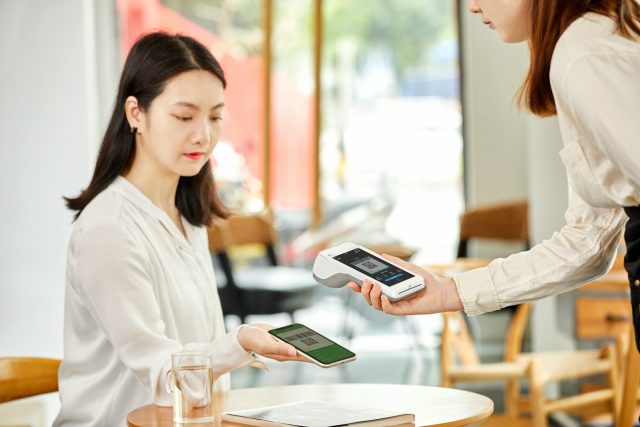
You’re expanding across Southeast Asia, but checkout is where momentum stalls. You face three familiar problems at once: fragmented payment habits by country (so your one-size-fits-all “APAC” page underperforms), cross‑border complexity that adds fraud, FX, and integration overhead, and mobile‑first shoppers who expect instant, familiar options—anything slower triggers drop‑off. The good news: when you match local preferences, you convert more carts, cut false declines, and open new corridors without sacrificing risk control.
What Shapes How People Pay in Southeast Asia
Southeast Asia is a young, mobile-first, and deeply online region. E-commerce continues to grow in both absolute size and frequency, with digital payments driving the increase. You should treat the region as a portfolio of markets rather than a single “APAC” play—because card penetration, real‑time bank rails, wallet usage, and cash habits differ sharply by country.
That diversity shows up in checkout behavior. Younger, urban consumers in Indonesia, Vietnam, and the Philippines are wallet‑first and happy to authenticate in‑app. In Singapore and Malaysia, cards still carry weight thanks to higher penetration and strong issuer offers.
Cross‑border Dynamics and Instant Rails
Cross‑border expectations are rising as instant‑payment systems link up. Under Project Nexus, the central banks of India, Malaysia, the Philippines, Singapore, and Thailand are working toward the live interconnection of their real-time systems—meaning customers will expect fast, low-cost cross-border checkouts as standard. If you sell into or across these corridors, build for account-to-account (A2A) and wallet-to-wallet flows alongside card transactions from the outset.
Cross-border transactions also magnify operational realities: more currencies, more regulators, and more fraud patterns. Get practical early:
- Offer settlement in the currencies you pay suppliers and staff in; minimize double‑conversion.
- Make FX transparent to customers and consistent for your finance team with clear pricing logic.
- Localize SCA/2FA flows; what feels normal in one market can look suspicious in another.
- Reconcile payouts per corridor and method so finance can close the books without manual firefighting.
Payment Method Landscape (Regional View)
Cards
Cards remain strong in mature markets. In Singapore, cards still account for a significant share of e-commerce value, even as wallets gain popularity. If you sell to Singapore, keep cards prominent, support network tokenization, and route intelligently by issuer BIN to lift approval rates. In markets with lower card penetration, treat cards as a trusted backup rather than the hero, and enable stored credentials for repeat purchases.
Digital wallets
Across SEA, wallets are now a default way to pay online, especially in Indonesia, Vietnam, and the Philippines. For you, that means wallet coverage isn’t “nice to have”—it’s table stakes. Prioritize the dominant local brands per market, enable in-app one-tap confirmation, and ensure that funding sources (cards, A2A) are supported smoothly. Watch for wallet-to-wallet and QR flows that settle instantly; they can reduce chargebacks and improve cash flow compared to cards.
Bank Transfers (account‑to‑account and instant rails)
A2A via instant rails (e.g., PayNow/FAST in Singapore, DuitNow/FPX in Malaysia, and PromptPay in Thailand) is mainstream for bill payments and is increasingly common at checkout. Treat pay‑by‑bank as a first‑class option with clear branding, real‑time status updates, and reconciliation that ties back to orders. In categories with high dispute risk (such as electronics and travel), guaranteed bank payments can significantly reduce chargeback exposure.
Buy Now, Pay Later
BNPL is meaningful for younger, under‑carded segments and selected verticals (electronics, fashion, travel). Use it surgically: test where ticket size and cohort skew justify the extra step, and closely monitor repayment-related chargebacks. Track regulatory developments by market; affordability checks and disclosure rules continue to evolve.
Cash on Delivery
COD still matters in parts of Vietnam and the Philippines, especially where trust in digital payments or delivery logistics is evolving. If you enable COD, provide customers with an easy path to switch to a wallet or bank transfer for subsequent purchases. Offer incentives for digital prepayment (e.g., small discounts, loyalty credit) once delivery trust is earned.
Merchant Acceptance and Checkout Readiness
Most high‑performing regional checkouts lead with a local wallet or pay‑by‑bank option, with cards visible as a trusted alternative. You’ll want:
- A wallet‑first default where wallets dominate, with graceful fallback to cards.
- Smart routing and network tokens for cards to minimize issuer friction.
- Clear pay‑by‑bank labels that match each market’s language and rail brand.
- Latency budgets that assume a mobile device on a variable network.
Treat method order as a growth lever, not a static setting: run country‑level experiments, track lift by device, and update defaults as rails and habits change.
Choosing a Payments Partner That Fits SEA
Selecting a provider is less about brand and more about fit, including coverage of local rails and wallets, cross-border settlement, risk controls, and the ability to A/B test method orders by market and device. Antom is a leading payment processor in Asia, and in regional builds, you’ll often evaluate it alongside global players like PayPal and Checkout.com. Use proof-of-value pilots to measure approval rates, end-to-end latency, fraud outcomes, and net conversion rates before standardizing.
Operational Pain Points You Should Plan For
Cross‑border adds a layer of complexity. You should expect to deal with:
- International fraud and security measures that raise false‑decline risk if signals are weak.
- Integration work across overseas systems is challenging, especially when method coverage is fragmented and multiple gateways need to be stitched together.
- Fees and FX opacity can erode margins and confuse customers.
A practical response:
- Instrument your funnel. Track drop‑offs at method selection, authentication, and authorization.
- Localize the default method. Lead with the top local wallet or pay-by-bank option for each market; keep cards prominent where they are most likely to convert.
- Orchestrate routing and risk. Utilize device signals and behavioral analytics, and escalate only when necessary to minimize both fraud and friction.
- Design for instant rails. Support real‑time A2A flows with clear refunds/returns and automated reconciliation.
- Forecast costs clearly. Model total cost of acceptance (fees + FX + fraud operations) by method and corridor, not just headline MDR.
Country Snapshots: Signals to Localize Your Mix
Use these high‑level cues as a starting configuration and validate with live A/B tests in your own checkout.
| Country | Wallets | Pay‑by‑bank / instant rails | Cards | BNPL | COD |
| Indonesia | Primary online method; strong usage | Growing (BI‑FAST, QRIS) | Moderate | Growing | Niche |
| Singapore | Widely used; rising | Mature (PayNow/FAST) | Strong share of e‑commerce value | Present | Rare |
| Malaysia | Common | Very strong (FPX/DuitNow) | Common | Present | Rare |
| Vietnam | Primary online method; fast growth | Expanding | Moderate | Emerging | Meaningful in specific journeys |
| Philippines | Primary online method; mobile‑first | Expanding (InstaPay/PESONet) | Moderate | Emerging | Present |
| Thailand | Common | Strong (PromptPay) | Common | Present | Niche |
How to Measure Success
To keep payments accountable to growth goals, monitor four KPIs across countries and cohorts:
- Authorization rate (by method and issuer). Route and tokenization should lift this over time.
- End‑to‑end latency. Time from “Pay” to confirmation on a mid‑range phone over a spotty network.
- Checkout conversion. Landing‑to‑paid, segmented by device, new vs. repeat, and traffic source.
- Cost per accepted transaction. Fees, FX, fraud losses, and operational time—net of chargebacks.
Conclusion
You win more customers in Southeast Asia when you offer the ways they already pay: local wallets, instant bank transfers, and cards where they’re trusted. Build for cross‑border from day one, keep latency low on mobile, and treat payments as an experience you iterate on—by market, by device, and by cohort. Do that, and you’ll convert more carts, cut fraud‑related friction, and scale region‑wide with confidence.










